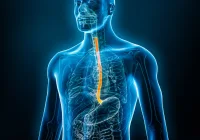Chronic back pain (CBP) remains a leading cause of disability across Europe, impacting over 80 million people and incurring high healthcare costs. Although CBP lacks a specific pathoanatomical origin in most cases, research increasingly points to the role of muscle composition—specifically lean muscle mass (LMM) and intermuscular adipose tissue (InterMAT)—in influencing its prevalence and symptom severity. A retrospective observational study, based on whole-body magnetic resonance imaging (MRI) data from the German National Cohort (NAKO), explored associations between muscle composition and CBP, revealing new avenues for risk assessment and intervention.
Associations Between Muscle Composition and Chronic Back Pain
The analysis included 27,518 participants who underwent whole-body MRI between 2014 and 2019. CBP was defined as back pain lasting more than three months. Muscle segmentation was performed using a deep learning model, with LMM calculated as fat-free muscle volume normalised to body mass index and InterMAT defined as adipose tissue between and around muscle groups. Multivariable mixed-effects logistic regression was used to assess the relationship between muscle composition and CBP, adjusting for confounders including age, sex, physical activity, osteoarthritis (OA) and osteoporosis (OP).
The results showed that individuals with CBP had significantly lower LMM and higher InterMAT than those without CBP. A two-unit increase in the InterMAT Z-score was associated with a 22% increase in the likelihood of CBP, while a corresponding increase in LMM was linked to a 13% reduction. These associations persisted in individuals with OA and OP. Notably, the combined effect of high InterMAT and low LMM substantially raised the odds of CBP, while high LMM only partially mitigated the adverse effects of high InterMAT.
Symptom Burden and Interactions Between Risk Factors
The study also explored the relationship between muscle composition and symptom burden, defined by moderate to severe pain. Higher InterMAT was associated with greater symptom burden, while higher LMM correlated with lower symptom intensity. These effects were independent of physical activity levels and musculoskeletal comorbidities. Participants with low or high levels of physical activity had a higher CBP prevalence than those with moderate activity, suggesting a U-shaped relationship. Despite this, individuals with greater InterMAT consistently reported more pain, regardless of activity level.
Must Read: Imaging Modalities for Early Detection of Cancer-Associated Cachexia
A heatmap analysis of Z-scores for InterMAT and LMM revealed synergistic effects. While low InterMAT could compensate for low LMM, high InterMAT could not be offset by higher LMM, underscoring the dominant influence of fat accumulation on CBP risk. A nomogram integrating all variables, including InterMAT and LMM, demonstrated moderate accuracy in predicting CBP probability and highlighted the importance of muscle composition as a potential imaging biomarker for musculoskeletal health.
Implications for Diagnosis, Prevention and Management
The findings confirm and extend previous research linking muscle composition to CBP, offering a comprehensive perspective based on a large, population-based cohort. Beyond CBP, variations in LMM and InterMAT were observed among participants with OA and OP, indicating their broader relevance as markers of musculoskeletal health. Even within comorbidity-stratified subgroups, individuals with CBP had significantly altered muscle composition, supporting the hypothesis that LMM and InterMAT reflect systemic changes rather than localised issues.
While MRI is not routinely used for CBP diagnosis, the study advocates for its integration into broader risk stratification frameworks, particularly when combined with other factors such as lifestyle, psychological profile and biomechanics. However, the cross-sectional design limits causal inference. Further, segmentation techniques did not differentiate between specific paraspinal muscles, and self-reported physical activity data may have introduced bias.
The study underscores the need for targeted interventions that consider individual muscle composition profiles. General recommendations for physical activity may be insufficient, particularly as excessive or occupational physical exertion can exacerbate musculoskeletal strain. Tailored exercise programmes aiming to increase LMM and reduce InterMAT could offer more effective prevention and management strategies, though more research is needed to determine the most impactful approaches.
The analysis reinforces the independent and synergistic roles of lean muscle mass and intermuscular adipose tissue in chronic back pain. It provides robust evidence that muscle composition should be considered alongside conventional risk factors and clinical assessments. The identification of LMM and InterMAT as imaging biomarkers opens the door to more personalised strategies for managing CBP and highlights the value of combining structural and functional assessments in musculoskeletal healthcare. Further longitudinal research is essential to establish causal pathways and guide clinical application of these insights.
Source: The Lancet Regional Health – Europe
Image Credit: iStock










